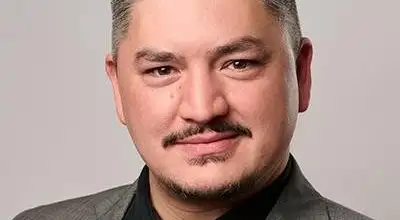Hidden Upfront Costs of Buying a House

Upfront costs of buying a house can add up to 5-7% of the home's price, not including the down payment. But there are ways to minimize out-of-pocket costs.
Adam Godby (NMLS #2286643) is a Loan Officer and Team Lead at First Residential Independent Mortgage (NMLS #1907), a Springfield, Missouri-based national lender. Equal Housing Opportunity. First Residential is a registered DBA of Mortgage Research Center, LLC, an affiliate of Three Creeks Media.
The upfront costs of buying a home may be hard to understand, but technically, they’re not hidden. They’re all written down somewhere.
As the home buyer, it’s your job to uncover and understand all the costs so they don’t surprise you later.
This means reading Loan Estimates and contracts line by line. When you don’t understand something, ask your real estate agent or your loan officer.
Summary of Upfront Costs
| Cost Type | Description | Approx. Cost |
|---|---|---|
| Earnest Money | Deposit showing commitment to purchase. | 0-1%+ of purchase price |
| Down Payment | Upfront percentage paid at closing. | 0-20%+ |
| Home Inspection | Buyer-paid check for safety, condition. | $500-$700 |
| Appraisal | Lender-required valuation of property. | $500+ |
| Realtor Fees | Typically seller-paid agent commissions. | 2-3% of sale price (often paid by seller) |
| Loan Origination | Lender’s fee for processing loan. | 0.5-1% of loan |
| Escrow | Account managing transaction and tax payments. | Depends on taxes, insurance |
| Title | Research and insurance for ownership rights. | $500-$2,000+ |
| Transfer Taxes | Government fees on property transfer. | 1-3% |
| Prepaid Costs | Upfront taxes, insurance, and interest. | Depends on timing of tax collection |
| Reserves | Savings cushion for mortgage payments. | 2+ months of full house payment |
| Moving | Transportation of belongings. | $500-$10,000+ |
| Property Amenities | Furniture, remodels, appliances, security upgrades. | Varies |
Upfront Costs to Know About Early in the Transaction
I’m a loan officer, and it’s my job to answer questions from my clients who are buying a home.
Here are the answers to a lot of questions my clients ask:
What is Earnest Money?
Earnest money is an initial deposit toward the home’s down payment. This payment is often expected when the buyer enters a contract to buy a home.
I’m licensed in 25 different states, and earnest money varies drastically from state to state. In some places, it’s standard to pay 1 percent of the home’s purchase price as earnest money. In other places, it’s standard to pay a flat amount such as $500 or $1,000. In some places it’s not required at all.
Paying earnest money shows you’re serious. It tells the seller you have skin in the game. When you have something to lose by walking away, you’re less likely to waste the seller’s time by walking away.
To be clear, you could lose the earnest money deposit if you don’t buy the home after entering the contract. You should get the money back when there’s a good reason for not buying, like the home inspection found termites or foundation damage. But if you decide you don’t like the home after all, the seller has the right to keep your earnest money.
I’ve seen this happen more than once. I had a client once who walked away from $10,000 in earnest money because he simply didn’t like the house after all.
When the buyer follows through and buys the home, the earnest money goes toward the purchase price. It’s usually deducted from the down payment.
How Much Is My Down Payment?
Down payments vary by loan and buyer. While it is possible for some buyers to put nothing down on a VA loan or a USDA loan, FHA and conventional loans will require some money down.
FHA loans, for instance, need at least 3.5 percent down. (For a $300,000 home, that’s $10,500 down.) One great thing about FHA loans: Buyers with lower credit scores or higher debt loads can still pay the minimum 3.5 percent down.
That’s not true with conventional mortgages. They rely more on the borrower’s personal finances. In theory, buyers can put as little as 3 percent down on a conventional loan. That’s $9,000 on a $300,000 home. You’ll see this written down as a fact on websites.
But in practice, only borrowers with excellent credit, minimal debt, and plenty of cash in the bank can get approved with 3 percent down, and those buyers can usually afford to put more down anyway.
Down payment cash changes hands when the loan closes, but loan officers will need proof the money exists to move forward with the loan application. That’s one reason why borrowers have to provide bank statements.
What are Home Inspection and Appraisal Fees?
Home inspections and home appraisals are two different things. Both cost the buyer money upfront, during the loan process, not at closing.
Home inspections: It’s up to the buyer to get the home inspected and to pay the inspector. A good inspector will check the home from its roof vents to its footings. This is the buyer’s way of making sure the home is safe and structurally sound before investing in it. The cost of the home inspection varies by home size and location. The average cost is about $500 to $700.
Home appraisals: The lender will order a home appraisal to find the home’s market value. The lender orders the appraisal, but the buyer pays for it. Many lenders charge the buyer an appraisal fee upfront. Others lump the cost into closing costs which we’ll talk about later. Appraisal costs also vary by location and home size. Expect to pay at least $500.
One more thing about inspections: Even though the buyer pays the inspector directly, the buyer should still tell the lender about the expense so it can be recorded in the loan file.
Who Pays Realtor Fees?
Traditionally, the seller pays Realtor fees and commissions on behalf of the seller and the buyer. The seller isn’t required to pay commissions, but it is what usually happens. For homes listed by real estate agencies, this Realtor commission, usually 5 to 6 percent, will already be built into the home’s price.
When buyers don’t have their own real estate agent, the seller’s agent can pocket all of the commission from the sale. If both the seller and the buyer have representation, the two agents will split the same commission.
Buyers should get their own agent since the same commission gets paid either way. You likely don't save money by not finding a buyer's agent.
For a home that’s listed for sale by the owner, the buyer will be responsible for their agent’s commission. Sellers list their homes without an agent because they don’t want to pay their own agent. It stands to reason they probably don’t want to pay the buyer’s agent either.
Closing Costs Needed to Finalize the Deal
A lot of the upfront costs home buyers pay get lumped into one category: Closing costs.
Collectively, closing costs can add 3 to 6 percent of a home’s purchase price, but the costs come from different places. They include:
Loan Origination Fee
The lender charges a loan origination fee (or a loan processing fee) to cover its administrative costs. Usually, this fee ranges from 0.5 to 1 percent of the loan size. For a $300,000 loan, that’s $1,500 to $3,000.
Borrowers can ask lenders to lower the origination fee. The lender might agree.
But be careful with lenders who advertise no-fee or no-closing costs loans. These loans tend to cost much more in the form of higher interest rates. The borrower eventually has to pay for all the work that sets up the new loan. If they don’t pay upfront, they’ll probably pay more later.
Escrow Fees
Dozens of financial transactions happen when someone buys a home. Taxes and insurance premiums get paid or refunded to the seller. Old mortgage or home equity lenders get paid off. The seller receives payment for the home. The buyer pays earnest money and closing fees. The agents get commission. And so on.
Escrow services organize and track this flow of cash. A home purchase usually uses two separate escrow accounts:
A temporary escrow account: This account is active during the closing process. It holds and then distributes money as owed to various parties. This account can stay open after the home closes, especially if contractors will be owed money for home repairs that haven’t been completed. But once all the dust settles, this account closes.
A permanent escrow account: The mortgage loan servicer opens this escrow account for collecting the home’s property taxes and insurance premiums. Each monthly mortgage payment includes extra money that goes toward these annual expenses. When the taxes and insurance come due, they get paid from this account.
You also pay an escrow fee at closing. This goes to the escrow company that handles moving all the money during the transaction (the temporary escrow account). There's no extra fee for the servicer to set up the permanent escrow account.
Title Fees
Title work is super important. It finds out whether the seller actually has the right to sell the home to the buyer. During the closing process, a title company will search the ownership history of the property to make sure no other person or business can claim to own all or part of the home.
For example, what if the IRS or a general contractor has a lien on the home? If that were true, the home shouldn’t be sold without the seller satisfying those debts first. Otherwise, they’d become the new owner’s responsibility. Not good.
Title searches typically cost several hundred dollars. But title searches won’t find title problems that haven’t surfaced yet. That’s why title insurance exists. It protects the policyholder from losing money because of an ownership dispute that gets discovered later.
Lenders require home buyers to pay for a title insurance policy that protects the lender from losing money from a future ownership dispute. Buyers can, and should, get a title insurance policy to protect themselves, too. Lots of times, opting into an owner’s title policy costs about the same as covering only the lender.
Title insurance policies can range from $500 to several thousand dollars, depending on the value of the home.
Transfer Taxes
Some states, counties, and municipalities charge transfer taxes any time a property’s title changes hands. These taxes are usually substantial, often between 1 and 3 percent of the purchase price.
The seller will often help with this cost, but that will need to be negotiated into the contract between the buyer and seller. In some jurisdictions, the taxes can be discounted, especially when buying a primary residence, or for first time homebuyers.
Pre-Paid Costs
The buyer has to pay some pre-paid costs to get a new loan’s timing on track. These costs will depend a lot on when in the year, or in the month, a home closes. These can be confusing, and surprising, to new home buyers:
Prepaid taxes and insurance: If a home closes on June 30, for instance, the new buyer will own the home for only six months of that year. This means the new owner will owe a half-a-year’s worth of property taxes and homeowners' insurance. If the same home closed on Dec. 1, the new owner would owe only a month’s worth of property taxes. Of course, this changes in counties where taxes are collected two or three times per year. Whatever the timing, the money for the current period will be due at closing.
Prepaid interest: The buyer may also owe pre-paid interest on the new loan. Why does this happen? Because the new loan’s first payment might not come due for six weeks after closing. During those six weeks, interest will accrue. It must be paid upfront on closing day.
These prepaid charges could add a few hundred or even a few thousand dollars to a home’s upfront costs.
Other Costs to Think About when Buying a Home
We’ve covered costs needed to go under contract and close a new home loan.
These aren’t the only expenses for new home buyers to plan for. Buyers should also be aware of:
Cash Reserves
Lenders don’t want to see buyers exhaust their life savings to buy a house. Entering homeownership with no money in the bank means the buyer may be only one unexpected expense away from missing a mortgage payment. Not good.
Lenders won’t always require the buyer to have cash reserves, but having money in the bank can strengthen a loan application, especially when the application is already a little shaky because of a low credit score or high debt load.
Ideally, buyers should have enough cushion left over to make three or more mortgage payments after paying closing costs and the down payment. This can reassure the lender, and it’s also good for the buyer. After all, owning a home includes paying for home repairs.
Moving Costs
If you’re moving across town and have a generous friend with a truck, moving costs may not break the bank. But if you’re moving across the state or to a different part of the U.S., you may need to hire professional movers. A short-distance, one-day move may cost $1,000 to $2,000.
A multi-day, across-the-country move could cost $10,000 or more.
Moving companies may ask for a deposit before you close on the home. Don’t pay this deposit without talking to your loan officer first. If your loan file depends on you having two months of cash reserves and you have exactly that much, paying the deposit could kill your loan.
Related: Free Moving Checklist PDF Download

A multi-day, across-the-country move could cost $10,000 or more. Moving companies may ask for a deposit before you close on the home. Don’t pay this deposit without talking to your loan officer first. Paying the deposit could kill your loan.
Utilities Deposits
The public utilities in your new neighborhood may need upfront deposits to turn on water, gas, and electricity. These deposits could easily run into the hundreds for each one.
Just like with moving company deposits, please don’t pay these from savings before closing the loan without checking with your loan officer.
Furnishings and Cosmetic Improvements
People moving from a small apartment or a shared living space may be surprised by how much furniture they need in a larger home. The new home’s lack of window coverings and even light fixtures can also surprise lots of new homeowners.
Many buyers find old carpet that needs to come up, strange wallpaper in the bathroom, and the general need for paint.
Some buyers can put these projects off for a while, but sooner or later they’ll need to be addressed, and they tend to cost a lot. Home buyers should try to plan ahead for these expenses.
New Appliances
New homeowners might walk into a laundry room that has no washer or dryer, or even a kitchen with no refrigerator or dishwasher.
Which appliances go and stay should have been covered in the contract to buy the home, but these details can be easy to forget about since there’s so much else for home buyers to think about before closing on the home.
Even when appliances stay, the new homeowner may want to replace them with newer, more efficient models.
Security System
Security systems are a common cost for new homeowners today. Smart systems that users can monitor on their phones eliminate monthly monitoring costs, but there’s still upfront equipment to buy. This could run hundreds of dollars.
Some people still prefer paying a company a monthly fee to provide and monitor home security equipment.
Having a home security system can reduce homeowners' insurance premiums. When you shop for new home insurance coverage, tell the insurance agent or broker about your security system plans.
Knowing About Costs Shouldn’t Scare Away Buyers
With all this stuff to pay for in advance, home shoppers might start to think buying their own home is out of reach.
That’s understandable, but it’s not true. Try not to confuse knowing about all the costs with paying too much in costs.
Even with the upfront costs, buying a home you can afford almost always costs less than continuing to pay rent in the long run.
If there’s a cost you still don’t understand, ask your loan officer. If the loan officer won’t help, find a different loan officer. Sooner or later you’ll come across somebody like me who wants buyers to know what’s going on every step of the way.






